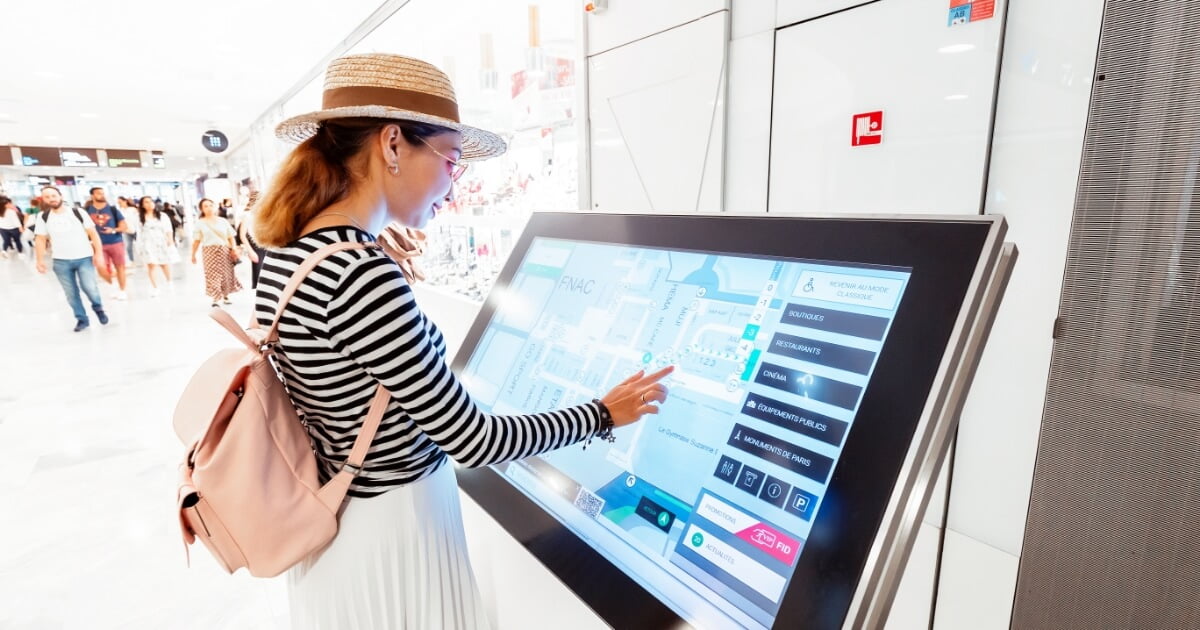In an age where attention spans are fleeting and competition for consumer attention is fierce, businesses are constantly seeking innovative ways to captivate their audience. Enter interactive digital signage – a dynamic fusion of technology and marketing that is revolutionizing the way brands communicate with their customers. In this article, we’ll explore the emergence of interactive digital signage, its myriad applications across various industries, and the key benefits it offers to businesses and consumers alike.
The Rise of Interactive Digital Signage
Digital signage has evolved from static displays to interactive experiences that blur the lines between offline and online engagement. Unlike traditional static signage, interactive digital signage invites users to actively participate, offering a two-way communication channel between brands and consumers. This interactive element transforms passive viewers into engaged participants, fostering deeper connections and driving meaningful interactions.
The proliferation of touchscreen technology, coupled with advancements in hardware and software capabilities, has fueled the growth of interactive digital signage across diverse sectors such as retail, hospitality, healthcare, education, transportation, and beyond. From interactive wayfinding kiosks in shopping malls to touchscreen menus in restaurants, interactive digital signage is reshaping the customer experience landscape.
Applications Across Industries
Retail:
In the retail sector, interactive digital signage serves as a powerful tool for driving sales and enhancing the shopping experience. Interactive displays allow customers to browse products, access detailed information, view reviews, and even make purchases directly from the screen. By providing personalized recommendations based on customer preferences and purchase history, retailers can deliver tailored shopping experiences that resonate with individual shoppers.
Hospitality:
Hotels, resorts, and hospitality venues leverage interactive digital signage to streamline guest services and deliver memorable experiences. Touchscreen kiosks enable guests to check-in/out, access concierge services, view amenities, and explore local attractions. Interactive displays in hotel lobbies can also serve as virtual concierge services, offering recommendations for dining, entertainment, and sightseeing activities.
Healthcare:
In the healthcare industry, interactive digital signage enhances patient engagement, improves communication, and facilitates wayfinding within medical facilities. Touchscreen kiosks in hospital waiting areas provide patients with access to educational resources, appointment scheduling, and directions to different departments. Interactive displays in clinics and medical offices can also be used to collect patient feedback, streamline registration processes, and deliver personalized health information.
Education:
Educational institutions are harnessing the power of interactive digital signage to create immersive learning environments and foster student engagement. Interactive whiteboards, digital signage displays, and touchscreen kiosks facilitate interactive lessons, collaborative projects, and multimedia presentations. Students can interact with educational content, participate in quizzes and polls, and explore interactive simulations, making learning more dynamic and engaging.
Transportation:
In the transportation sector, interactive digital signage plays a vital role in providing real-time information, enhancing passenger experience, and optimizing operations. Interactive kiosks at airports, train stations, and bus terminals deliver flight/train/bus schedules, wayfinding assistance, and travel updates. Touchscreen displays onboard vehicles offer entertainment options, passenger amenities, and interactive maps for navigation.
Benefits for Businesses and Consumers
Enhanced Engagement:
Interactive digital signage captures attention and encourages active participation, resulting in higher engagement levels compared to traditional static signage. By offering interactive experiences that are immersive and interactive, businesses can create memorable brand interactions that leave a lasting impression on consumers.
Personalized Experiences:
Interactive digital signage allows for personalized content delivery based on user preferences, demographics, and behavior patterns. Whether it’s recommending products, suggesting relevant services, or tailoring educational content, personalized experiences resonate with consumers and drive conversions.
Data-driven Insights:
Interactive digital signage generates valuable data insights that enable businesses to understand consumer behavior, measure engagement metrics, and optimize content strategies. By analyzing user interactions, dwell times, and conversion rates, businesses can refine their messaging, target audience segments more effectively, and make data-driven decisions to improve ROI.
Operational Efficiency:
Interactive digital signage streamlines processes, reduces operational costs, and enhances efficiency across various industries. Whether it’s self-service kiosks that automate transactions, digital wayfinding solutions that minimize staff intervention, or interactive displays that facilitate information dissemination, businesses benefit from improved operational workflows and resource allocation.
Brand Differentiation:
In today’s competitive marketplace, standing out from the crowd is essential for brands to capture attention and gain a competitive edge. Interactive digital signage offers a unique opportunity for brands to differentiate themselves by delivering innovative, interactive experiences that resonate with consumers and reinforce brand identity.
Conclusion
Interactive digital signage represents a paradigm shift in the way businesses communicate, engage with, and delight their audience. By harnessing the power of technology to create immersive, interactive experiences, brands can forge deeper connections with consumers, drive meaningful interactions, and ultimately achieve their business objectives. As interactive digital signage continues to evolve and innovate, its potential to transform the customer experience landscape remains limitless, offering businesses a powerful tool to unlock engagement and drive success in the digital age.


